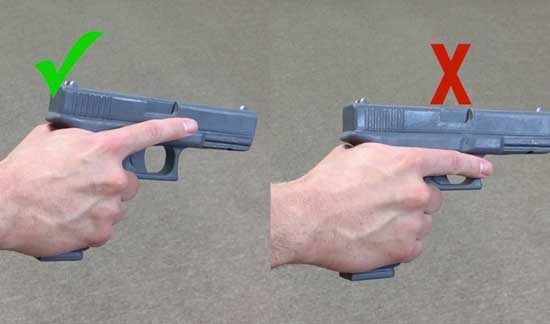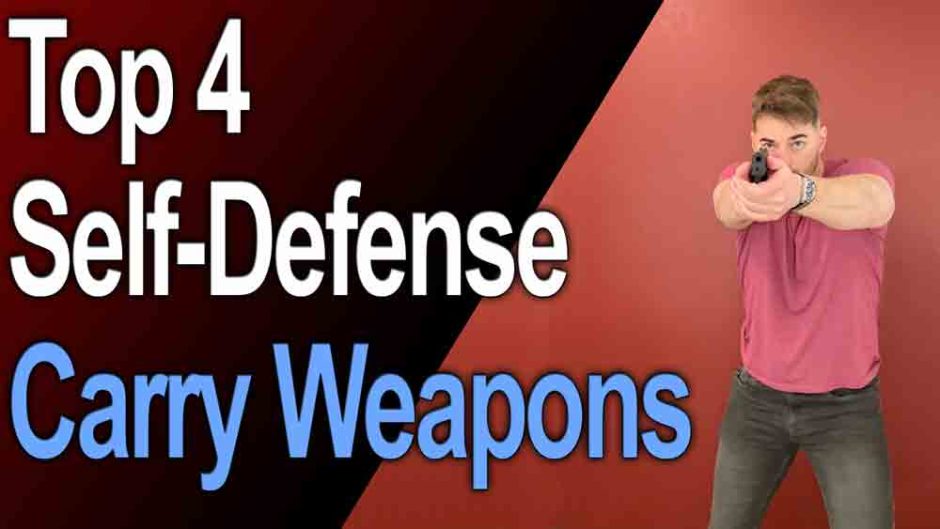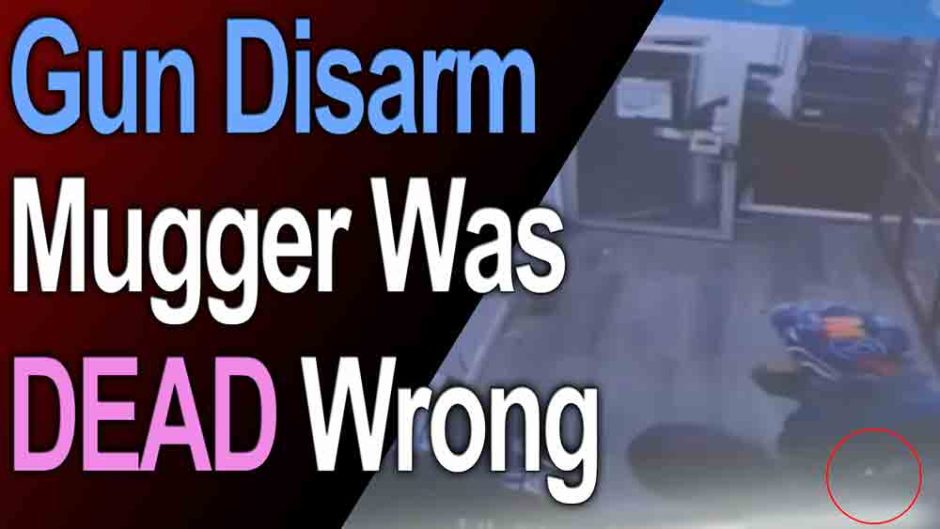Firearm safety is important whether you carry a gun or not. Today we will quickly go over the 4 rules of gun safety and some drills you can use to train them.
Why the 4 Rules of Gun Safety?
Some of you may be thinking, “Brian I don’t carry or even own a gun. So why should I care about gun safety?”
Great question. As a self-defense person you understand that guns are a part of violence and that you must be prepared to disarm a gun.
After the disarm the fight is not necessarily over. You might still be getting attacked by a 2nd attacker. Then again the primary attacker you disarmed might try to get the gun back. I used to train with a fighter who disarmed a gun and then the attacker pulled out a 2nd gun and shot him. Thankfully he disarmed the 2nd gun as well but he was shot and unfortunately received a life altering injury as a result.
Regardless of what happens once you have that gun what are you going to do with it?
- Waive it around with your finger on the trigger?
- Put it in the back of your pants like Will Smith in Men in Black?
- Eject the magazine and chambered round?
- Aim it at the attacker and command him to stop?
- Will you be holding it in your hand when the police show up? (pro-user tip… I wouldn’t!)
Well whatever you chose you will want to know how to not negligently shoot yourself or some innocent person in the process.
Thus the need to actually train the 4 rules of gun safety whenever you practice disarms.
If you carry or own a gun then the need to train gun safety if obvious.
So here we go…
#1 Finger on the Slide / Off the Trigger
Your finger should always be on the slide of the gun never on the trigger until you are on-target and have made the decision to shoot.
It is common practice for self-defense folks to disarm the gun and immediately put their finger on the trigger. However you may or may not yet be accurately on target or ready to fire. So best practice would be go immediately to the slide. You can always move to the trigger in an instant.
One of the primary human reflexes is a startle response. It is characterized by flexion and adduction. In laymen’s terms that means if anything suddenly surprises you your fingers will squeeze and if your finger is on the trigger… BANG!
Were you on target or did you just shoot someone in the background who wasn’t involved?
Yeah, exactly! So keep that finger off the trigger and keep it on the slide.
I also do not recommend putting it on the trigger guard because different guns have different trigger guard lengths and different people have different finger lengths. And if you just disarmed someone else’s gun who knows what the trigger guard length might be.
I have heard of and personally seen many people accidentally shoot their gun because they went to rest their finger on the guard and it went through and pulled the trigger.

#2 Never Point the Muzzle at Anything You are Not Willing to Destroy
In the video I show some examples of people pointing the muzzle at other people (off camera), their own leg, or towards areas where people are or could be.
That is fine if the gun is unloaded and their finger is off of the trigger but we aren’t ok with “IFs” therefore we follow rules of gun safety that provide overlapping layers of safety.
Safe places to point the muzzle:
- The ground
- The sky
- A bullet proof wall (brick, concrete, etc.) especially where there are not people on the other side of it
- Your attacker (just be aware of what is behind them if you miss)
- If you are in a semi-ready position the muzzle should be aimed at the ground about 2 feet in front of you. Finger on the slide of course because you are not on target ready to fire.
#3 Always Treat the Gun as if it is Loaded
In the video I show a police officer giving a presentation on gun safety. He pulls out a pistol, proceeds to explain why he is the only person qualified to have the gun because he is so well trained.
Then he aims the muzzle at his partner (who is off camera). He has his partner inspect the gun to make sure it is unloaded (they didn’t do a good job).
He then rests his finger on the trigger of his “unloaded” gun and shoots himself in the leg.
The saying I want you to repeat over and over is, “the unloaded gun makes the loudest bang.”
#4 Be Aware of What is Beyond Your Target
If you do disarm or need to draw your own concealed handgun on an attacker you absolutely must be aware of what is beyond your target.
The rule of thumb is always aim for center mass. The chest / torso as it is the largest and thus easiest to hit. Compare that with an arm, leg, or head which are small targets and are very easy to miss.
But even aiming at a larger target statistics show that you will miss. Even “well-trained” police officers miss several of their shots at close range.
Performance at the gun range is no indicator of success. In a real world situation you don’t have time to relax and take your aim and fire off one shot at a time. You must get your sight alignment and front sight picture – or up close point shoot – under stress with urgency and most likely while moving backwards trying not to trip on sidewalk curbs.
So Top Shots champion-level accuracy you will not have.
Therefore if there are people in the background you must move to the side so that if and when you miss your bullets will not hit them.
There are of course always extenuating circumstances where you may need to fire regardless and in those cases training training and more training under simulated combat stress is important.
Drills
Here are some of the drills I use to train the 4 rules of gun safety.
Drop it and pick it up
Simply drop the gun (please use a training pistol) and now pick it up with a proper 1-handed grip making sure to put your index finger on the slide and don’t accidentally put your middle finger in the trigger guard.
Post Disarm
During the disarm I try whenever possible to twist the muzzle up towards the sky or down towards the ground rather than horizontally where a round could get fired into bystanders. While this isn’t always possible most gun disarms can be easily modified to meet this standard.
After the disarm I make sure to keep the muzzle pointed at the attacker as I shield it, make space, make it operational, and acquire my sight alignment and picture.
I typically then visualize my attacker running off. So I will then pull it in and point it towards the ground about 2 feet in front of me. Take quick peeks left and right to scan for additional threats. Then I carefully hide the gun in my waistband at 4 o’clock making sure to point the muzzle away from my body and have my finger on the slide the whole time. I then cover the gun with my shirt and leave it alone. When I pull it back out I follow the same rules, finger on slide and aim the muzzle away from my leg.
2nd Weapon
Sometimes I will visualize my partner (or actually have them do this) pull a 2nd gun or a knife and charge me. I then quick see if there are any other students behind the attacker. If there are I move to the side as I squeeze the trigger so any missed rounds would not hit them.
2nd Attacker
Other times I will have a 2nd training partner act as an attacker who comes from my side. I will lower the weapon so I don’t trace other people then get back up on target and squeeze off simulated rounds.
Hide the gun
Just like in the post disarm drill after every simulation I always practice hiding the gun in my waistband at 4 o’clock safely and simulate calling 911. I sure don’t want a visible gun on my person when the police arrive, I’ve heard that is bad for your health.
When the police ask you where the gun is you simply say it is in my waistband at 4 o’clock and loaded. They will likely just tell you to raise your arms while they come get the gun. If they tell you to get on the ground, hand behind your head, etc… just do what they say. It is for their safety and everyone else’s as well.
Final Thoughts
Adding gun safety to self-defense training isn’t an extra burden it is a necessary extension of any well designed drill. Feel free to make up your own fun gun safety drills. We sometimes play “don’t trace anyone drills” where we are supposed to be on a target but will have people walk in your path and you must lower the muzzle and raise it back once they are past.
Have fun with it and get your reps.
Until next time,
Brian



